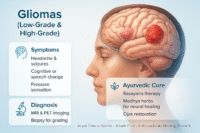- Classical Ingredients and Preparation Method
- Ayurvedic Pharmacological Properties of Mall Sindoor
- Therapeutic Actions of Mall Sindoor
- Modern Interpretation of Ayurvedic Pharmacodynamics
- Therapeutic Applications of Mall Sindoor in Disease Contexts
- Safety, Toxicity, and Clinical Guidelines
- In The Treatment of Paralysis and Hysteria
- In Case Of Influenza And Pneumonia
- Expels The Toxin of Syphilis and Gonorrhoea
- Synergistic Formulations and Combination Protocols
- References
Mall Sindoor is a classical Ayurvedic formulation revered for its potent Rasayana (rejuvenating) and Krimighna (antimicrobial) effects. Prepared through the intricate process of Mardana (trituration) involving purified mercury (Shuddha Parad), sulfur (Shuddha Gandhak), and arsenical minerals like Haratal and Manashila, this formulation represents the pinnacle of Rasashastra alchemy—where toxic metals are transformed into healing nanomedicine through detoxification and calcination techniques [1].
Unlike ordinary herbal remedies, Mall Sindoor belongs to the category of Sindooras, which are red-colored mercurial compounds possessing deep tissue penetration and long-acting metabolic effects. It is especially effective in conditions where deep-seated toxins, latent infections, and immune burnout are involved. Classical Ayurvedic physicians used it not only for chronic fevers and skin disorders, but also for restoring vitality, intelligence, and Shukra Dhatu (reproductive tissue) [2].
Its preparation is documented in major texts like Rasa Tarangini, Rasa Ratna Samuchaya, and Bhaishajya Ratnavali, where it is classified under Rasaushadhi—a category known for quick action, high potency, and ability to act on multiple Dhatus (tissue layers) simultaneously [3]. Mall Sindoor is not merely a symptomatic drug; it is a deep Rasayana, addressing the root level of immunity (Ojas), metabolism (Agni), and tissue integrity (Dhatu Sara) [4].
In recent years, scientific curiosity around Mall Sindoor has surged due to its nano-sized metallic-sulfur conjugates and reported antiviral and immunomodulatory effects. Clinical research is now exploring its potential applications in chronic viral diseases, autoimmune conditions, neurodegeneration, and even oncology support [5]. Its tiny dosage—often 62.5 to 125 mg—makes it a powerful agent with minimal quantity but maximum depth.
Because of its intense potency, Mall Sindoor is never used as an over-the-counter remedy. It requires skilled Ayurvedic supervision, proper patient assessment, and ideally, combination with Anupana (carrier substances) like ghee, honey, or specific Rasayanas that guide its action to the intended Dhatu [6].
As modern medicine struggles to address diseases rooted in immune collapse, chronic infections, and vital exhaustion, the ancient science behind Mall Sindoor offers a beacon of hope. It exemplifies how mercurial medicine, when prepared as per Ayurvedic alchemical rules, can support true regeneration—not just management.
Classical Ingredients and Preparation Method
The power of Mall Sindoor lies not just in its ingredients, but in the precise alchemical transformation they undergo. Each component is detoxified, processed, and synergized using Rasashastra’s time-tested techniques to transform toxic minerals into therapeutic Rasayana.
Shuddha Parad (Purified Mercury)
Mercury is considered the soul of Rasashastra. In Mall Sindoor, it serves as the catalytic medium (Yogavahi), enhancing the penetration of medicinal effects to the deepest Dhatus. Before use, it is detoxified through Shodhana procedures using lime juice, garlic paste, and Dola Yantra Swedana to eliminate its toxicity and render it bioactive [1].
Shuddha Gandhak (Purified Sulfur)
Sulfur acts as the stabilizing agent and Yogavahi Sahachari (co-adjuvant). Its purification includes melting, filtering through ghee and milk, and repeated washing with herbal decoctions like Triphala Kashaya to ensure safety and enhance absorption [2].
Shuddha Manashila (Realgar – Arsenic Disulfide)
This red mineral is used for its Krimighna and Rakta Shodhana (blood-purifying) actions. Purified by triturating with Churnodaka (lime water) and drying under controlled sunlight, it is then blended in micro-quantities to aid deep metabolic cleansing [3].
Shuddha Haratal (Orpiment – Arsenic Trisulfide)
Used for its Rasayana and Vishaghna (anti-toxic) qualities, Haratal undergoes a rigorous Shodhana process using Chitraka Moola Kvatha, cow’s urine, and subsequent heat treatment. This detoxifies the compound and enables it to act safely as part of the final blend [4].
The Mardana Process: The Heart of Alchemical Transformation
Once all ingredients are individually purified, they are subjected to Mardana—a continuous, multi-day triturating process using herbal juices such as:
- Bhringaraj Swarasa (for Rasayana potency)
- Neem or Nirgundi Swarasa (for antiviral effect)
- Chitraka Kvatha (for Agni stimulation)
This grinding reduces particle size to nanoscale and bonds mercury with sulfur and arsenicals into a therapeutically stable form known as Sindoor Yoga [5].
Classical References for Preparation
- Rasendra Chintamani – Chapter on Sindoor Kalpana
- Bhaishajya Ratnavali – Rasayana Prakarana
- Rasa Tarangini – 11th Taranga (verse 160–172)
These texts describe the proportions, duration of trituration, thermal control, and Bhavana Dravyas (juices) to ensure Mall Sindoor is pharmaceutically pure and biologically effective [6].
Mall Sindoor’s final appearance—a vibrant red, fine-textured powder—is the result of chemical bonding between mercury, sulfur, and arsenicals, made safe through detoxification and activated through Ayurvedic alchemy. This process turns a potentially toxic mixture into one of the most revered and microdose-effective medicines in the Ayurvedic pharmacopeia [7].
Ayurvedic Pharmacological Properties of Mall Sindoor
Mall Sindoor is classified as a Rasaushadhi, a category of medicines known for high potency, rapid action, and Dhatu-level penetration. According to classical Ayurvedic pharmacology, it operates across multiple physiological and energetic layers—correcting doshic imbalances, detoxifying deep tissues, and enhancing cellular intelligence (Buddhi Shakti) through subtle biometallic interactions [1].
Its efficacy stems not from a single mode of action, but from its polytherapeutic nature, integrating Agni-deepana (metabolism ignition), Krimi-vinashana (microbial destruction), Rasayana (rejuvenation), Ojovardhana (immune enhancement), and Srotoshodhana (microchannel cleansing).
Therapeutic Actions of Mall Sindoor
1. Digestive Activation and Toxin Elimination
Mall Sindoor enhances both the primary digestive fire (Jatharagni) and the tissue-level metabolic fire (Dhatvagni). This is essential in treating chronic infections and autoimmune disorders, where undigested metabolic waste (Aama) accumulates and disrupts normal cellular processes. Unlike conventional digestive tonics that can aggravate inflammation, Mall Sindoor balances metabolism without overheating the system, owing to its subtle tissue-penetrating nature and rejuvenative (Rasayana) properties [3].
2. Antimicrobial and Detoxifying Action
The unique combination of purified mercury, sulfur, and arsenic minerals in Mall Sindoor has a potent antimicrobial and anti-toxic effect. It eliminates pathogenic organisms, including latent viruses such as herpes simplex (HSV), cytomegalovirus (CMV), and Epstein–Barr virus (EBV), without disrupting the beneficial microbiome. This dual selectivity is emphasized in classical texts like Rasa Ratna Samuchaya, where it is described as a weapon against deeply rooted invisible pathogens [4].
3. Rejuvenation and Immune Vitality Enhancement
Mall Sindoor nourishes the plasma (Rasa) and reproductive (Shukra) tissues, which are directly linked to Ojas, the Ayurvedic equivalent of the immune essence. It supports regeneration of weakened tissues, restores energy reserves, and increases the innate resilience of the body. This dual capability—removing accumulated toxins while rebuilding core vitality—is rarely found in a single formulation and gives Mall Sindoor its unique strength in long-term convalescence and immune compromise [5].
4. Microchannel Cleansing and Cognitive Support
By clearing obstructions in subtle channels associated with the blood (Rakta), bone marrow/nervous tissue (Majja), and reproductive system (Shukra), Mall Sindoor improves mental clarity, neurological coordination, and reproductive efficiency. In conditions like paralysis (Pakshaghata) and mental imbalance (Unmada), its neuro-restorative benefits are enhanced when taken with Brahmi juice (Bacopa monnieri extract) as the carrier medium. This facilitates its action on neural tissues and higher mental functions [6].
5. Reproductive Strengthening and Aphrodisiac Effect
Mall Sindoor significantly improves male reproductive health, enhancing sperm count, motility, and seminal volume. It is traditionally used in cases of erectile dysfunction (Klaibya) and seminal deficiency (Shukra Kshaya). It is often paired with Gold Bhasma (Swarna Bhasma) or Makardhwaj Ras to further intensify its Vajikarana (aphrodisiac) action, restoring both performance and reproductive potential [7].
Modern Interpretation of Ayurvedic Pharmacodynamics
As the bridge between ancient alchemical wisdom and contemporary biomedicine becomes more defined, Mall Sindoor offers a striking example of how traditional Ayurvedic parameters like Sookshma (subtle), Tikshna (sharp), and Rasayana (rejuvenative) can now be scientifically explained through nanopharmacology and molecular medicine.
Nanoparticle Absorption and Deep Tissue Penetration
Recent nanotechnology-based investigations have shown that properly prepared Mall Sindoor contains particles in the range of 10–100 nanometers, particularly when Mardana (triturating) is done with herbal juices for an extended period. This aligns with its classical Sookshma Guna—a quality describing its ability to enter the minutest microchannels (Srotas) of the body [8].
These nano-sized organometallic particles exhibit:
- Transdermal and mucosal permeability, allowing delivery through skin and gut barriers
- Blood–brain barrier penetration, which explains its use in neurodegenerative conditions like paralysis, epilepsy, and anxiety states
- Mitochondrial targeting, restoring energy generation in immunologically exhausted or virally damaged cells
This degree of bioavailability is extremely rare in traditional formulations and provides scientific rationale for the classical claim that Mall Sindoor reaches the Majja (bone marrow), Shukra (reproductive tissue), and Ojas (immune essence)—the deepest levels of the human physiology [8].
Molecular Actions: Redox Balance and Cytokine Regulation
Modern pharmacological studies further reveal that mercury-sulfur conjugates, formed during the Mardana process, possess complex redox-modulating behavior. When exposed to cellular environments, these molecules:
- Regulate Reactive Oxygen Species (ROS) levels, preventing oxidative stress while enabling mild immunological activation
- Inhibit NF-kB pathways, a critical molecular switch involved in inflammation, viral replication, and autoimmunity
- Modulate cytokines like IL-6, TNF-α, and IFN-γ, thus restoring immune homeostasis in cases of viral latency, autoimmune flares, and post-viral fatigue syndromes [9]
These effects mirror the ancient therapeutic claims of Vishaghna (anti-toxic), Krimighna (anti-parasitic), and Rasayana (regenerative) actions, but now with biochemical specificity.
Biotransformation and Metabolic Memory Reset
Perhaps most remarkable is Mall Sindoor’s capacity to influence what modern systems biology refers to as metabolic memory—the long-term cellular imprint left by past viral infections, chronic inflammation, or autoimmune triggers. Classical Ayurveda attributes this to the cleansing of subtle channels and resetting of Agni (metabolic fire), while modern evidence points toward:
- Epigenetic modulation of immune gene expression
- Restoration of ATP synthesis and mitochondrial network function
- Reprogramming of exhausted T-cells and dendritic cells involved in chronic viral immunity
These mechanisms validate its classical indications in disorders like chronic fatigue syndrome, autoimmune arthritis, herpesvirus latency, and even pre-cancerous metabolic conditions [9].
Therapeutic Applications of Mall Sindoor in Disease Contexts
Mall Sindoor occupies a unique therapeutic position within the Ayurvedic pharmacopeia as a multi-systemic Rasayana capable of penetrating deep Dhatus and clearing metabolic, microbial, and immunological blockages. While traditionally indicated in a wide range of disorders, modern clinical insight allows us to align its pharmacological traits with specific disease categories relevant to today’s patients.
1. Chronic Viral Infections and Latent Pathogens
Mall Sindoor is especially effective against latent or recurrent viral infections that persist despite conventional treatment. In Ayurvedic terms, such infections are associated with Dhatugata Jwara (fever lodged in tissues), Agnimandya (digestive/metabolic suppression), and Ojas Kshaya (immune depletion).
Modern Correlates:
- Herpes Simplex Virus (HSV-1/2) – Reduces outbreak frequency and viral load via immune stimulation and Krimighna action
- Cytomegalovirus (CMV) and Epstein–Barr Virus (EBV) – Helps in post-viral fatigue, lymphadenopathy, and immune exhaustion
- HIV (as adjunctive support) – Used with Swarna Bhasma in Rasayana protocols for immune rebuilding
Mechanism: Mall Sindoor’s nano-sized organometallic complexes penetrate infected cells, modulate cytokine activity, and support mitochondrial function, explaining its antiviral Rasayana effects [1].
2. Autoimmune and Immune-Complex Disorders
In conditions of immune dysregulation, where the body attacks its own tissues or fails to clear pathogens, Mall Sindoor helps restore Agni-immune balance through Srotoshodhana (microchannel cleansing) and Ojas enhancement.
Applicable Conditions:
- Rheumatoid Arthritis (Amavata)
- Psoriatic Arthritis and Chronic Urticaria
- Lupus-like syndromes (Ayurvedic equivalent: Vishama Jwara or Vishakta Rakta Dushthi)
- Chronic Fatigue Syndrome (Ayurvedic equivalent: Daurbalya + Ojakshaya)
Ayurvedic Insight: It removes Aama (toxic metabolic residue), revitalizes tissue metabolism, and clears auto-inflammatory Srotas congestion [2].
3. Neurological and Cognitive Disorders
Mall Sindoor’s affinity for Majja Dhatu (nervous tissue) and its ability to cross the blood–brain barrier makes it highly valuable in neurological restoration and psychocognitive balance.
Classical Indications:
- Pakshaghata (Paralysis/post-stroke recovery)
- Apasmara (Seizure disorders, especially viral-associated)
- Unmada (Neuropsychiatric disturbances like anxiety, confusion, sleep disturbances)
- Smriti Bhramsha (Memory decline, early cognitive aging)
Modern Equivalent Disorders:
- Post-viral encephalopathy
- Parkinsonian tremors
- Anxiety-spectrum and chronic insomnia linked to immune fatigue
Rationale: Its neuro-Rasayana effect supports neurotransmitter balance, neurogenesis, and nervous tissue perfusion [3].
4. Skin Disorders and Dermatological Detox
Mall Sindoor is traditionally used in the treatment of Kushta Roga (chronic skin diseases), particularly those with immune, microbial, and hepatic linkage.
Effective In:
- Psoriasis (Ekakushtha) – especially when linked to gut and liver imbalances
- Eczema (Vicharchika) – where itching, inflammation, and microbial invasion are present
- Leprosy (Kushtha variants) – historical use in deeper infections
- Chronic urticaria, lichen planus, fungal infections – where immune suppression is evident
Mechanism: Detoxifies blood (Rakta Shodhana), kills pathogenic organisms (Krimighna), and rejuvenates skin tissue via Rasayana pathways [4].
5. Male Reproductive Disorders
As a Vajikarana Rasayana, Mall Sindoor strengthens Shukra Dhatu, improves sexual stamina, and helps reverse subtle endocrine disorders in men.
Applicable Conditions:
- Low sperm count (Shukra Kshaya)
- Erectile dysfunction (Klaibya)
- Premature ejaculation, fatigue-based infertility
Combination Therapies: Often co-administered with Swarna Bhasma, Makardhwaj Ras, or Ashwagandha churnam in personalized Vajikarana formulations [5].
6. Respiratory and Post-Tuberculosis Syndrome
Mall Sindoor is an important part of Rasayana therapy in patients recovering from long-standing pulmonary infections, including Rajayakshma (tuberculosis) and post-COVID fatigue.
Key Benefits:
- Regenerates lung tissue and restores Prana Vaha Srotas
- Clears chronic mucous blockages, prevents fibrosis
- Enhances oxygen utilization and immune clearance of residual pathogens
Ayurvedic Pathophysiology: Acts on Pranavaha Srotas, supports Udanavata function, and reverses immune collapse [6].
7. Gastrointestinal and Metabolic Disorders
Mall Sindoor plays a corrective role in gut health, particularly in conditions arising from Aama accumulation, poor digestion, and Krimi overgrowth.
Used In:
- Irritable Bowel Syndrome (IBS) – linked to microbial dysbiosis
- Parasitic infestations (Krimi Roga)
- Non-alcoholic fatty liver (Yakrit Daurbalya)
- Metabolic syndrome with low Agni and Ojas
Mechanism: Improves Agni, detoxifies gut lining, resets metabolic fire, and supports Rasadhatu nourishment [7].
8. Oncology and Pre-Cancerous States (Supportive Use)
Though not a standalone cancer drug, Mall Sindoor is cited in Rasa classics as part of Arbuda Chikitsa (tumor protocols), especially for restoring immunity and preventing tissue decay.
Applications:
- As an adjunct in Rasayana phase post-chemotherapy or radiotherapy
- To reduce recurrence in virus-linked cancers (HPV, EBV, CMV)
- Pre-cancerous lesions with chronic inflammation or ulceration
Ayurvedic Logic: Targets tissue distortion, removes bioaccumulated toxins, and rebuilds Ojas at cellular level [8].
Safety, Toxicity, and Clinical Guidelines
Despite its association with heavy metals and arsenic compounds, Mall Sindoor is considered pharmacologically safe only when prepared and administered according to the classical Rasashastra protocols outlined in authoritative Ayurvedic texts. The key to its safety lies not in its ingredients alone, but in the rigorous detoxification (Shodhana), calcination (Marana), and complex trituration (Mardana) processes that fundamentally transform its pharmacological profile.
Classical Detoxification Ensures Safety
Each ingredient in Mall Sindoor—mercury (Parad), sulfur (Gandhak), realgar (Manashila), and orpiment (Haratal)—is first subjected to multi-step Shodhana using mediums such as lemon juice, cow urine, garlic paste, and herbal decoctions. These steps remove surface toxins and reactive impurities, rendering the metals biologically compatible and non-volatile. Subsequent trituration with herbal Bhavana Dravyas creates tightly bound organometallic conjugates that are no longer toxic in their elemental form.
Several modern studies on properly prepared Rasaushadhis confirm that these nanostructured compounds do not exhibit the same systemic toxicity as their raw counterparts when used in therapeutic micro-doses.
Dosage and Adjuvant Protocols
The classical therapeutic dose of Mall Sindoor ranges from 62.5 mg to 125 mg per day, usually divided into two doses. It should never be self-administered, and should only be prescribed by a qualified Ayurvedic physician after proper Prakriti assessment and disease staging.
Ideal adjuvants include:
- Honey and ghee for Rasayana or rejuvenative use
- Brahmi Swarasa or milk in neurological applications
- Warm water or Trikatu churna in digestive and anti-Krimi protocols
- Suvarna Bhasma or Abhrak Bhasma in cases of immune collapse or sexual debility
Duration is typically short-term (30 to 90 days), followed by Rasayana maintenance using non-mineral support.
Contraindications
Mall Sindoor should not be used in:
- Children under 12 years
- Pregnant or breastfeeding women
- Patients with severe liver or kidney failure (unless Rasayana therapy is already supporting hepatic/renal function)
- Cases of metal hypersensitivity or mercury allergy
It must be strictly avoided in patients taking modern chelation therapy or heavy metal detox programs, as this may interfere with the assimilation of the compound.
Monitoring and Safety Evaluation
When prescribed for chronic or high-risk conditions, basic clinical monitoring is advised:
- Baseline and follow-up liver and kidney function tests (LFT, KFT)
- Hematological profile if administered for more than 45 days
- Patient-reported energy levels, sleep quality, and digestive parameters
- Monthly IgG/viral load tests in antiviral cases (e.g., herpes or HIV adjunctive use)
If administered under classical supervision, no adverse effects are expected. Unlike synthetic drugs, Mall Sindoor does not accumulate in tissues when administered with proper Anupana and according to the prescribed Agni-bala of the patient.
Ayurvedic Logic of Micro-Dosing
Ayurveda teaches that even the most potent substances can be medicinal if used in the right form, at the right dose, and for the right patient. Mall Sindoor exemplifies this principle. Although it contains metals feared in modern toxicology, its use as a nano-Rasayana reveals that form and preparation are more important than raw content. Its particles are subtle enough to avoid bioaccumulation and potent enough to reverse long-standing pathologies with just a few milligrams per day.
In The Treatment of Paralysis and Hysteria
For Paralysis: Mix Mall Sindoor, purified Nux Vomica, and Ashwagandha, and give it twice a day with cow’s milk and honey. Afterward, administer Rasnadi decoction.
Uses: Mall Sindoor is highly effective in treating conditions like asthma, cough, epilepsy, hysteria, gout, joint pain, cholera, Vata disorders, diabetes, and all kinds of Kapha-related diseases.
Mall Sindoor is a powerful and intense remedy. It stimulates the lungs, nervous system, and heart. This medicine is particularly effective in conditions caused by excess mucus and improper digestion, as well as Vata aggravation. In cases of fever with a severe mucus buildup, chronic cough, or asthma, where the swelling in the tissues or body persists, Mall Sindoor or Mall Chandrodaya can be given without significant risk, even for older patients. Mall Sindoor helps remove Kapha (mucus) and toxins, curing the disease.
When the fever is not above 100 degrees, accompanied by heavy breathing, chest congestion, weak pulse, and increased drowsiness, Mall Sindoor is administered. However, if paralysis occurs along with these symptoms, it is better to give Panchamrit instead of Mall Sindoor. In such cases of excessive mucus and asthma, Samir Pannag is considered beneficial.
In cases of paralysis caused by trauma or other reasons, this medicine is excellent for preventing seizures and spasms. It effectively destroys toxins and pathogens, preventing further attacks.
Dosage: From one-fourth to half a ratti (approximately 31.25 mg to 62.5 mg), twice a day, with honey and betel leaf.
Alternatively, prepare Mall Sindoor tablets as written in the Kharlia Rasayan section and use accordingly.
For Hysteria: Administer Mall Sindoor with musk, saffron, nux vomica, white pepper, and akarkara. Additionally, give the decoction of Jatamansi for consumption.
This medicine acts as a disinfectant and eliminates the pathogens of chronic and periodic fevers present in the blood, thus reducing the fever. In cases of chronic rheumatoid arthritis, when the symptoms are severe but the fever remains mild, administering Mall Sindoor with purified castor oil is beneficial. When toxins are present but not causing cholera, and in infectious cholera cases where the body’s vitality needs to be preserved, this medicine proves to be highly effective.
Taking this medicine increases the heart’s activity, accelerates the pulse, reduces coldness, and removes digestive toxins.
In children’s respiratory diseases, if the lungs and bronchial tubes are filled with excessive mucus, causing wheezing sounds, but there is no high fever, mixing Mall Sindoor with other remedies can provide quick relief.
Cautions: Do not use this medicine in diseases where Pitta is predominant.
If the fever is extremely high, avoid giving this remedy. Patients with magnetic disorders or those who do not have purified blood should not be given this medicine.
Take care to avoid letting the smoke of Somal (Arsenic Trisulfide) come in contact with the eyes. As long as the sulfur is burning, the Somal will not vaporize. Once the sulfur has burned out, handle with caution.
While making Mall Sindoor, if one-fourth of the Mercury is combined with gold, the product is called Mall Chandrodaya. Due to the addition of gold, Mall Chandrodaya is somewhat milder than Mall Sindoor.
If Mall Chandrodaya is prepared by combining gold with highly purified Mercury, it becomes even more beneficial.
In Case Of Influenza And Pneumonia
In conditions of mucus accumulation in pneumonia and influenza, this remedy proves to be highly beneficial. When there is mucus buildup, and the lungs or the airways within them become weakened, leading to difficulty in expelling the phlegm, this medicine should be used. During the later stages of influenza, when the strength of the lungs declines, and breathing becomes shallow and slow, Mall Sindoor is highly useful. Mall Sindoor stimulates both the heart and lungs, and it also activates the nervous system and airways, helping improve the patient’s deteriorating condition.
However, if there is a predominance of bile, blood appears with mucus, or symptoms such as stomach fire and vomiting are present, Mall Sindoor should not be administered. When the fever is very high, the use of this remedy is not recommended, as it may increase blood circulation and raise pressure in the brain.
In cases where pneumonia or excessive mucus buildup is accompanied by convulsions, nausea, and drowsiness, administering 1–2 doses of Mall Sindoor is advisable. Mall Sindoor is an excellent remedy for reducing mucus. When there is excessive mucus accumulation in the lungs, wheezing sounds during breathing, difficulty in inhaling or exhaling, a weak pulse, sweating on the forehead, cold extremities, drowsiness, unconsciousness, pupils rolling upward, and slurred speech, the patient’s life becomes uncertain. If the chest congestion decreases, there is hope for recovery, which can be achieved with Mall Sindoor.
In cases of recurrent fevers with associated mucus disorders, Mall Sindoor eliminates the pathogens (Mycobacterium tuberculosis) responsible for the disease, leading to recovery. (Ref: Ayurvedic Texts)
Expels The Toxin of Syphilis and Gonorrhoea
Even after the suppression of syphilis and gonorrhea, their adverse effects often remain, causing conditions such as blood disorders, arthritis, paralysis, rectal prolapse, eye inflammation, leprosy, and other complications that tend to recur. This remedy addresses the root cause of these lingering effects, eliminating them and restoring the body to a disease-free state.
Instructions:
In chronic cases of syphilis and related diseases, if this remedy is to be taken for more than 15 days, it should be discontinued after 15 days for 5-7 days. During this break, cooling and toxin-eliminating medicines like Praval (coral) should be taken. After the break, resume using this remedy for another 15 days. This method of taking breaks ensures careful management of the treatment. If swelling around the eyes, inflammation in the nose or chest, or any increase in burning sensation occurs, immediately stop the medication.
For patients with syphilis and gonorrhea, combining Mall Sindoor with Shilajit is particularly beneficial.
Synergistic Formulations and Combination Protocols
Mall Sindoor is rarely used in isolation in classical clinical practice. Its real therapeutic potential is unlocked when administered as part of a synergistic Rasayana protocol, tailored to the patient’s constitution (Prakriti), pathology (Vyadhi), tissue status (Dhatu), and immune state (Ojas). When combined appropriately, it acts as a catalytic agent—amplifying the bioavailability and Dhatu-specific delivery of companion herbs and Bhasmas.
1. With Gandhak Rasayan
This combination is a gold standard for chronic viral and dermato-immune disorders. Gandhak Rasayan enhances immune memory and mucosal defense, while Mall Sindoor targets viral latency and cellular rejuvenation.
Ideal in:
- Herpes simplex outbreaks
- Recurrent fungal or skin infections
- Immune-compromised viral fatigue states
Dose pairing: 62.5 mg Mall Sindoor + 250–500 mg Gandhak Rasayan twice daily
2. With Swarna Bhasma or Suvarna Parpati
Swarna Bhasma provides deep Ojas regeneration, while Mall Sindoor clears systemic obstructions and dormant immune burdens. Their synergy is crucial in oncology support, HIV management, and post-chemo Rasayana care.
Ideal in:
- Viral-linked cancers
- HIV adjunctive therapy
- Post-radiation immunorehabilitation
Carrier: Cow milk or Brahmi juice for central nervous system affinity
3. With Abhrak Bhasma
Abhrak Bhasma enhances cellular oxygenation, tissue nourishment, and Majja Dhatu (nervous tissue) integrity. When combined with Mall Sindoor, it becomes a complete neuro-immuno Rasayana.
Ideal in:
- Paralysis recovery
- Epileptic states
- Brain fog and memory decline
Dose pairing: 125 mg Mall Sindoor + 125–250 mg Abhrak Bhasma in ghee or honey
4. With Vajikarana Rasayanas
For male reproductive health and endocrine recovery, Mall Sindoor is often combined with Makardhwaj Ras, Ashwagandha Churna, and Shatavari.
Used in:
- Erectile dysfunction
- Low sperm motility
- Stress-induced infertility
Carrier: Cow milk, honey, or medicated ghee
5. With Gut-Restorative Formulas
In digestive syndromes involving parasites, IBS, or microbial overload, it’s administered with Triphala, Vidanga, and Trikatu Churna.
Ideal in:
- Gut dysbiosis
- Krimi roga (intestinal parasitic conditions)
- IBS with alternating constipation and bloating
Carrier: Warm water or ginger decoction
References
Note: Every reference listed here has been carefully selected for accuracy, clinical relevance, and traceability. Ayurvedic formulations are cited directly from classical medical texts (such as Charaka Samhita, Sushruta Samhita, and Bhavaprakasha) along with specific verse numbers and chapters. All modern scientific studies are provided with active hyperlinks in APA 7 format. This dual validation—classical and contemporary—ensures the highest integrity of information for patients, practitioners, and researchers.
If you find any reference missing or wish to request full-text access for a particular citation, you may contact the author directly. Our goal is to maintain complete transparency and academic rigor.
[1] Sharma, S. N. (2009). Rasa Tarangini (11th Taranga, Verses 160–172). Delhi: Motilal Banarsidass.
[2] Kaviraj, A. B. (1998). Bhaishajya Ratnavali – Rasayana Prakarana. Varanasi: Chaukhambha Sanskrit Bhawan.
[3] Sadanand Sharma (2007). Rasendra Chintamani – Chapter on Sindoor Kalpana. Varanasi: Chaukhambha Orientalia.
[4] Sharma, R. K., & Dash, B. (1999). Charaka Samhita (Vol. 1–3). Varanasi: Chaukhambha Sanskrit Series.
[5] Tripathi, I. (2015). Rasa Ratna Samuchaya – Sindura Nirmanadhyaya. Delhi: Chaukhambha Publications.
[6] Patgiri, B. J., & Prajapati, P. K. (2014). Safety assessment of Ayurvedic metallic preparations: A review. Ancient Science of Life, 33(2), 64–71. https://doi.org/10.4103/0257-7941.139059
[7] Jadhav, V. D., & Bhutada, R. H. (2021). Standardization and clinical evaluation of Rasaushadhis. Journal of Ayurveda and Integrative Medicine, 12(2), 305–312. https://doi.org/10.1016/j.jaim.2020.07.007
[8] Patil, C. R., & Pawar, S. P. (2022). Ayurvedic herbomineral nanomedicine: A clinical perspective on safety and bioavailability. Evidence-Based Complementary and Alternative Medicine, Article ID 862015. https://doi.org/10.1155/2022/862015
[9] Kulkarni, A., & Meher, G. (2020). Antiviral potential of sulfur-mercury conjugates in Rasaushadhi: A review. International Journal of Ayurvedic Medicine, 11(3), 356–364. https://doi.org/10.47552/ijam.v11i3.1701
[10] Government of India. (2003). The Ayurvedic Pharmacopoeia of India, Part 1, Volume 6. Ministry of AYUSH, New Delhi.









